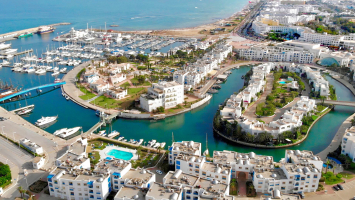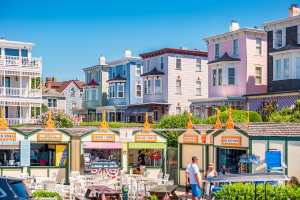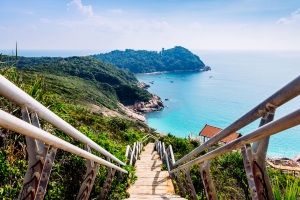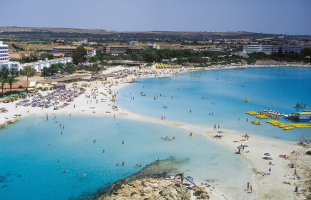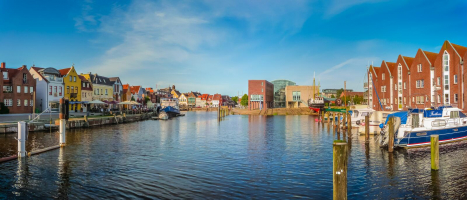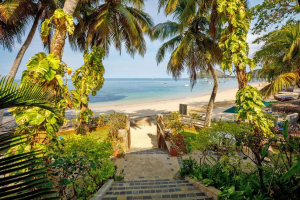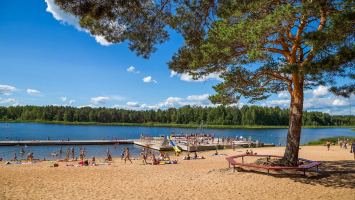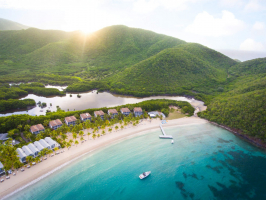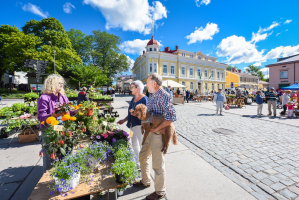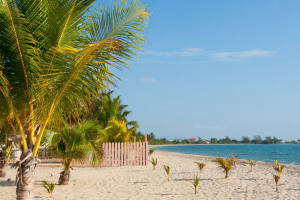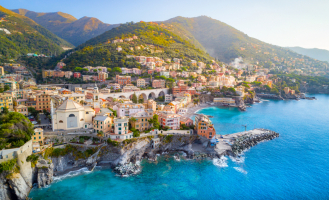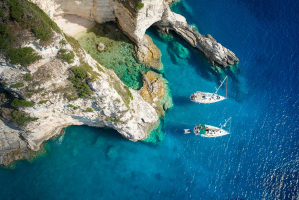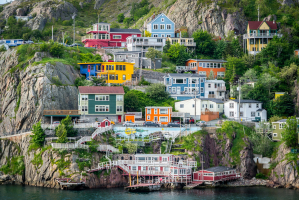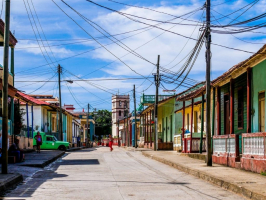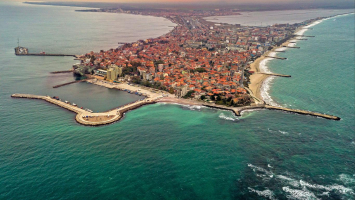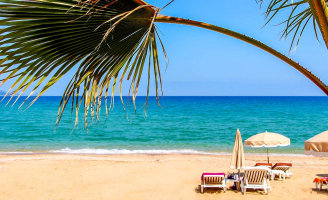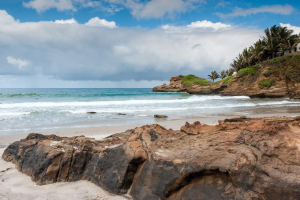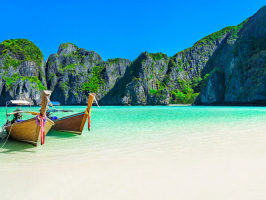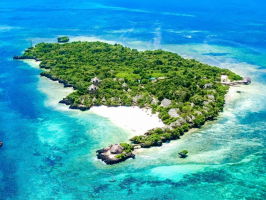Top 11 Most Beautiful Coastal Towns in Spain
Some will argue that until you've experienced all the Spanish coast has to offer, you haven't fully tasted life on the Med. You may have partied all night in ... read more...Barcelona or eaten paella in Valencia. Spain has a 1,600-kilometer-long coastline, so there are plenty of lovely seaside towns to discover. The coastal cities that protect the sea from Andalusia to Asturias, from the Basque country to Catalonia, provide breathtaking beaches, picturesque natural settings, and an abundance of enticing regional specialties. For this reason, Toplist has created this list of Spain's most picturesque seaside towns that any intrepid traveler should take into account.
-
Costa del Sol (Málaga) is the first coastal cities in Spain. Therefore, do a summertime seaside road trip in Southern Spain and take in all of Malaga's and its coasts' splendors! The Costa del Sol, which is one of Spain's most well-known coastal areas and where most Europeans who visit Spanish shores during the summertime vacation, is situated in the country's south.
And if we think about everything it has to offer, it is not surprising. Stunning sandy beaches over 300 kilometers, 3000 hours of sunshine annually, and an ideal temperature. Additionally, there are the lovely and temperate waters of the Mediterranean, a wide variety of sports and leisure activities, a laid-back attitude, and first-rate cuisine.
These and other factors influence how many people decide to spend their vacations along this coast. It is also the best. Golf enthusiasts should visit there as well. In actuality, it has the greatest concentration of golf courses in all of Europe. In fact, it has been nicknamed "the Golf Coast," which many people consider to be a joke.
Due to the numerous cheap international connections offered by Malaga's airport, this section of the Spanish coast is incredibly accessible. Additionally, Malaga has a fantastic cultural offer, and there are many enjoyable tours to explore the city and its surrounds. To enjoy your Andalusian summer, the Costa del Sol is unquestionably a great option for everyone. Here, you can also find some of the most spectacular Spain seaside resorts and villas.Location: Málaga province
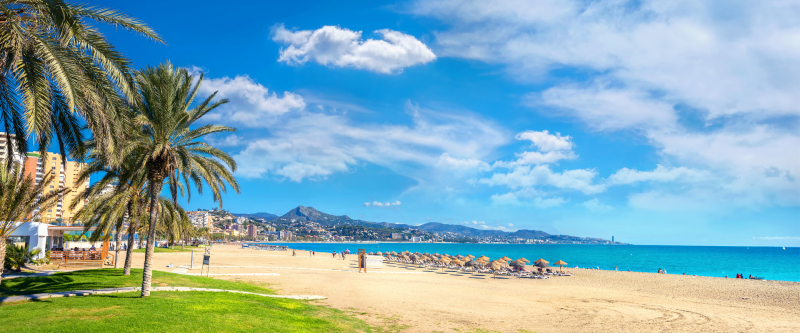
https://vivirspain.com/ 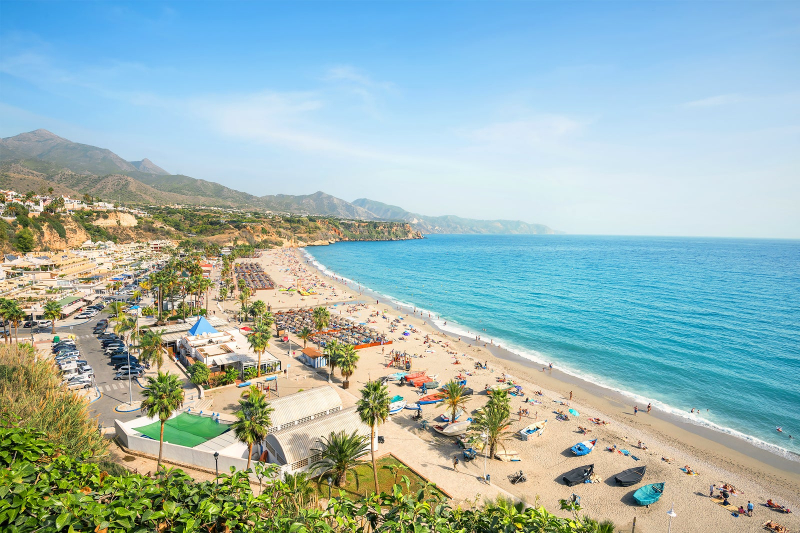
https://www.hotels.com/ -
Let's start coastal journey and itinerary via Spain's main coasts and beach cities! It's time for Costa de la Luz, which is in the provinces of Huelva and Cádiz, southwest of Andalusia. Enjoy these wonderful coastal towns in Spain. The name is derived from the intense sunshine that shines here throughout the year and is reflected in a unique way in the clear, vast sand dunes and in the fiery red sunsets.
Costa de la Luz's broad beaches with the Atlantic Ocean's clean, mighty seas. Additionally, the peninsula's finest and cleanest sand is found in unending dunes. Many of them are situated in picture-perfect, serene settings. Others are livelier, have top-notch hotel complexes, marinas, and golf courses, and have a good selection of recreational activities. Due to the wind and favorable weather, the Costa de la Luz also provides the ideal conditions for sailing, water sports, surfing, and paragliding. The beachfront town of Tarifa is a must-visit for surfers!
Location: Huelva and Cádiz
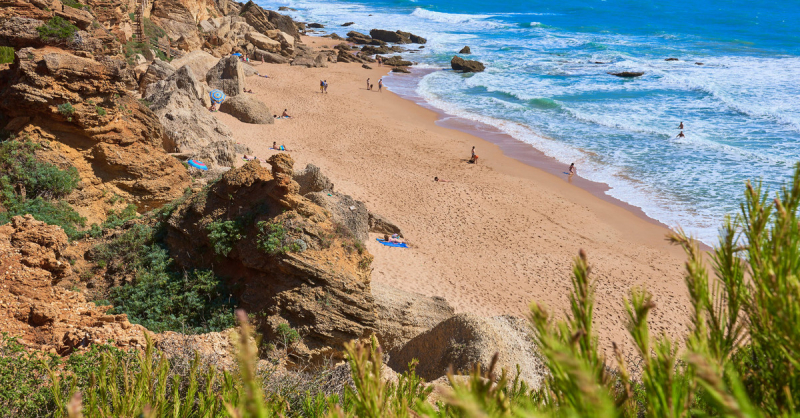
https://www.traveler.es 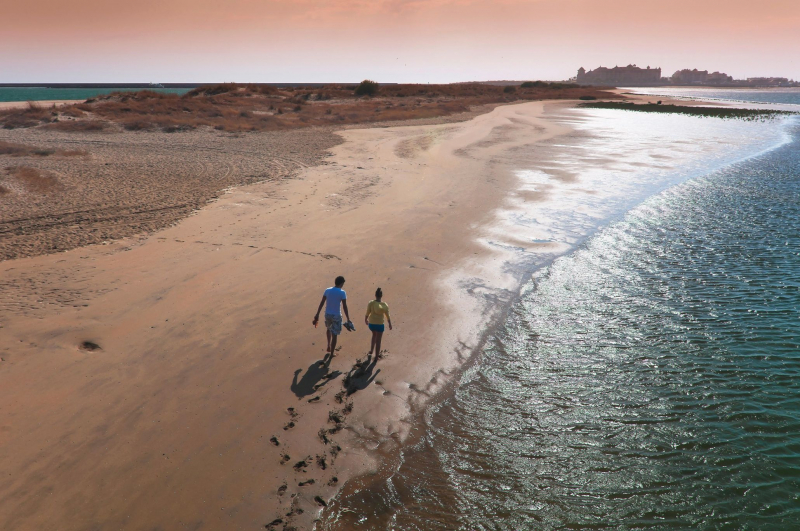
https://www.pinterest.com/ -
Drive 30 minutes south to reach the beach after seeing the Alhambra in Granada. The region of Granada's Costa Tropical is home to some exceptionally beautiful beaches. It's ideal for a short road trip down the Spanish coast and is also far less congested than its well-known neighbor, the Costa del Sol.
The province of Granada, which is the one to the east of Malaga, contains the coastline known as the Costa Tropical. It's interesting to note that the impacts of this coastline's subtropical environment are what gave it its name. Mountains form a series of beautiful headlands, protected bays, and beaches along a large portion of the Costa Tropical. La Herradura's horseshoe-shaped bay is a beautiful, pristine example.
This coastline is highly well-liked by both hikers and climbers as a result of this feature. Not to mention tourists that come to try their hand at the numerous sports and water activities that this shore is renowned for. Due to the abundance of marine life and water clarity in the bays east of Punta de la Mona, water sports and scuba diving are very common.
It is worthwhile to travel to Salobrena, a white settlement. You'll have to choose between going to the beach or the Moorish castle in this place. The moniker Costa Tropical is validated by the sugar cane plantations' continued existence in this area. One of the biggest cities on the Costa Tropical is Almuecar. It should come as no surprise that it is home to a number of fantastic sites, including the San Miguel Castle.Location:Granada
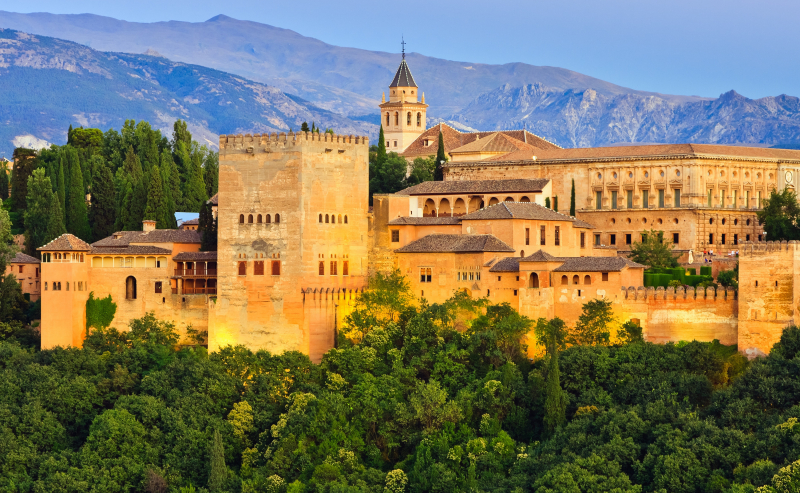
https://caloriecontrol.org/ 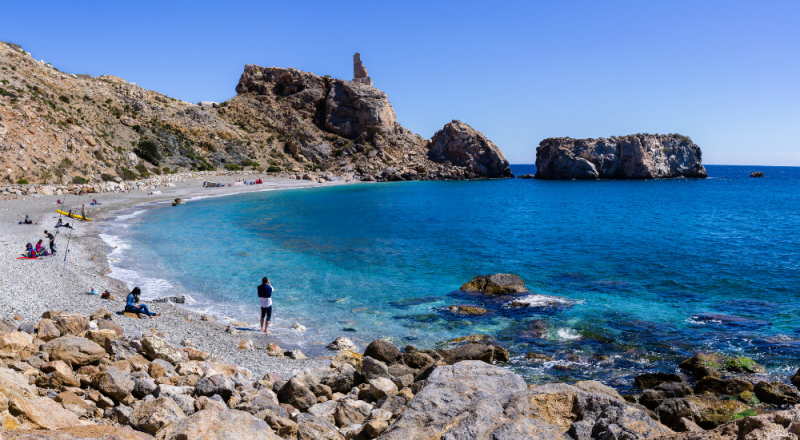
https://www.ruralidays.co.uk/ -
Let's learn more about the major Spanish beach cities and their coastlines! The coastline of the province of Almera is known as "Costa de Almera" or "Golfo de Almera." It covers 217 kilometers and runs through the provinces of Granada and Murcia in Andalusia's southeast.
The variations along this coast, where people also discover little coves in addition to wide sandy beaches, are its main attractions. Along with vast mountain ranges, lowlands, and beaches; along with plantations and extremely dry deserts. The sky is another appealing aspect.
More than 3,000 hours of sunshine fall on Almera each year. It has a warm, dry, subtropical Mediterranean climate. Its waters are warmer than the air in the winter and the average annual temperature is 18 to 19 Celsius Degree. Consequently, it's a terrific place to visit all year long, and Southern Spain has some excellent but lesser-known beach resorts.
Many undeveloped and isolated beaches can still be found on the Costa de Almera. In actuality, we can largely locate uncharted areas with low population density. Only a few places, such the seaside communities of Adra, Almerimar, Roquetas de Mar, Mojácar, Aguadulce, El Toyo, and Vera, have been successfully developed for tourism.Location: Almería
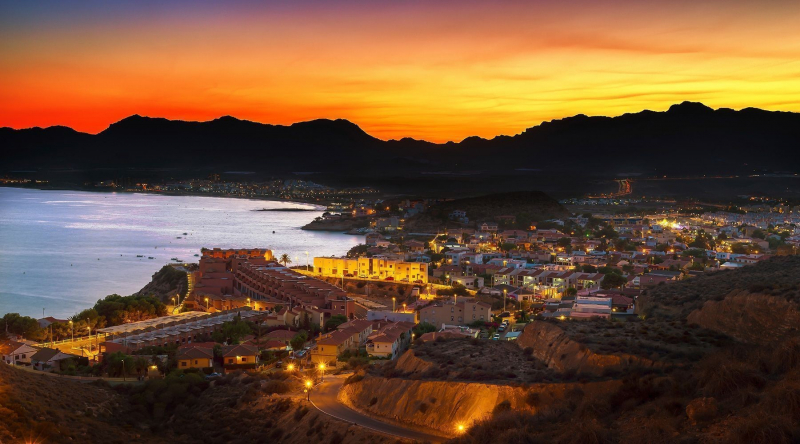
https://erasmusu.com/ 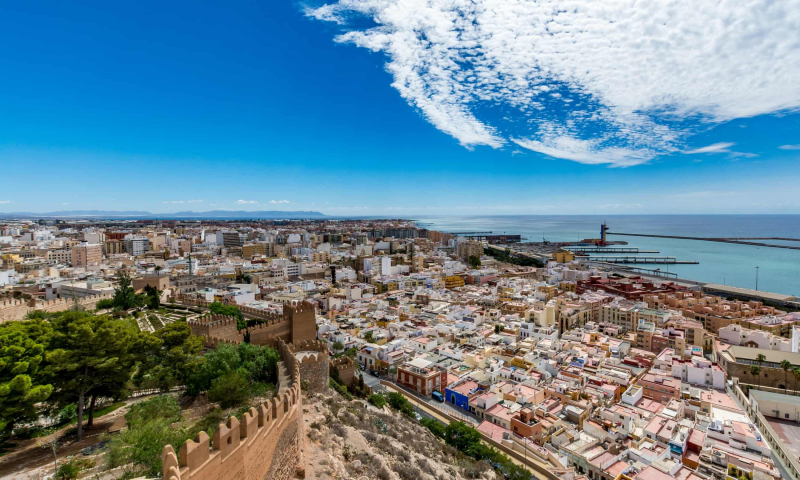
https://www.pinterest.com/ -
One of the most well-known Spanish coastal areas is Costa Brava. The Costa Brava is situated close to the French border in the very northeast of Spain. This 214 kilometer long coastline. It is situated in Catalonia's Gerona province. also stretches into the province of Barcelona from the French border to the La Tordera river mouth, where the Costa del Maresme starts.
The sharp topography throughout much of this shore, where the waves pound madly on the rocks, is where the name "Costa Brava" originates. We find steep cliffs and obscure coves that are only accessible by water or coastal roads and are encircled by forest. With some of the top northern Spain seaside resorts, it's ideal for a coastal road trip!
There were small fishing or farming settlements before tourists arrived. The area's natural beauty drew authors and artists including Marc Chagall, Picasso, Rudiol, and Dal during the turn of the 20th century. The first tourists started to arrive in 1930, staying in traditional homes and interacting with fishermen and farmers.When European visitors first arrived, it was in 1950. Additionally, around 1960, places with sandy beaches, like Tossa de Mar and Lloret de Mar, experienced significant urban expansion. Other beaches or coastal communities with a more abrupt coast can still be found today, nevertheless, and they retain their original character.
Location: Girona
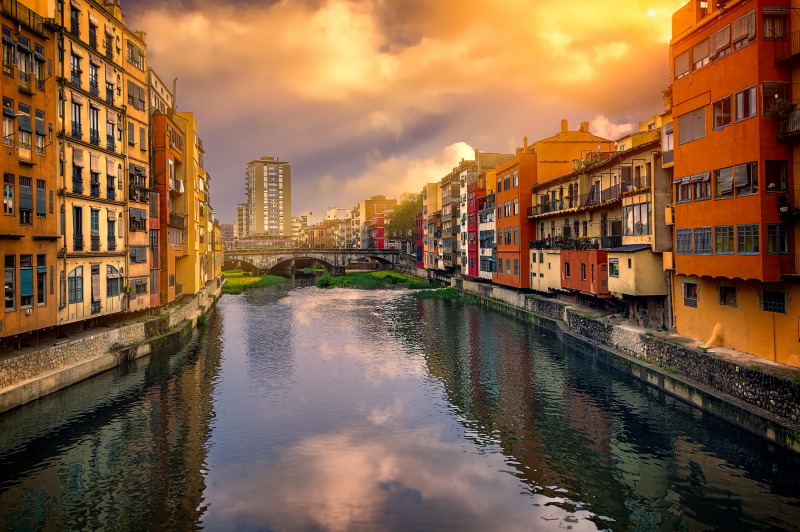
http://www.thousandwonders.net/ 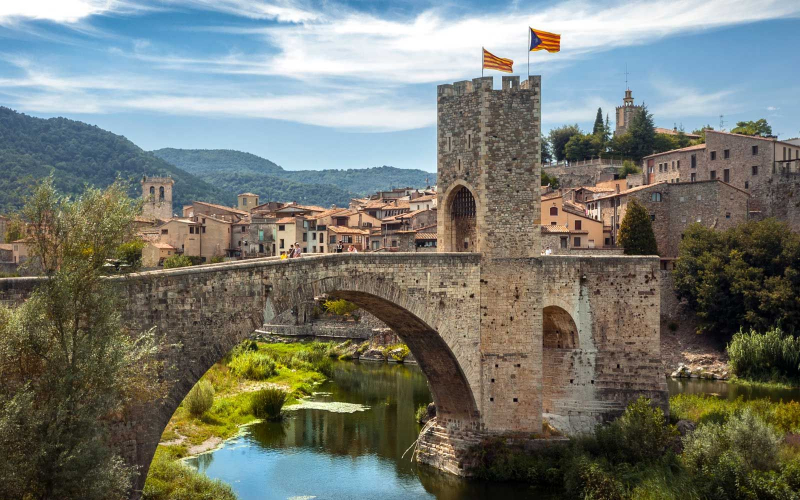
https://www.pinterest.com/ -
The Costa Blanca region, a section of shoreline that is part of the province of Alicante, can be found by traveling down Spain's coastline. It is 200 kilometers long and has beautiful beaches and other scenic locations. Visitors are transported into a true paradise by its warm, clear waters, palm trees, and natural parks.
When people look at an aerial shot of this coast, the name "Costa Blanca" is not a surprise. Large white regions stand out in contrast to the Mediterranean's deep blue, whether they are communities with whitewashed dwellings, clear rocky peaks, or sandy beaches. British European Airways created the term Costa Blanca in 1957 as a "slogan" to advertise a flight between Valencia and London.
The Costa Blanca is a preferred Spain seaside destination all year round due to its favorable environment, which boasts more than 300 sunny days and an average yearly temperature of 17 °C. The Costa Blanca is a region of opposites, where the mountains and sea converge to form enchanting cliffs and undiscovered bays with clear seas and a diverse seafloor. Here, tiny bays of stones, gravel, or rock alternate with fine, golden sand beaches.
Location: Alicante
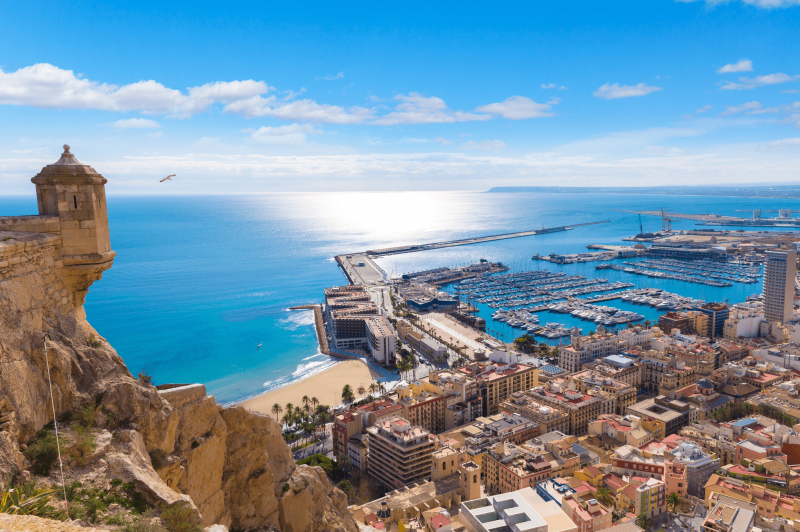
https://torreviejatranslation.com/ 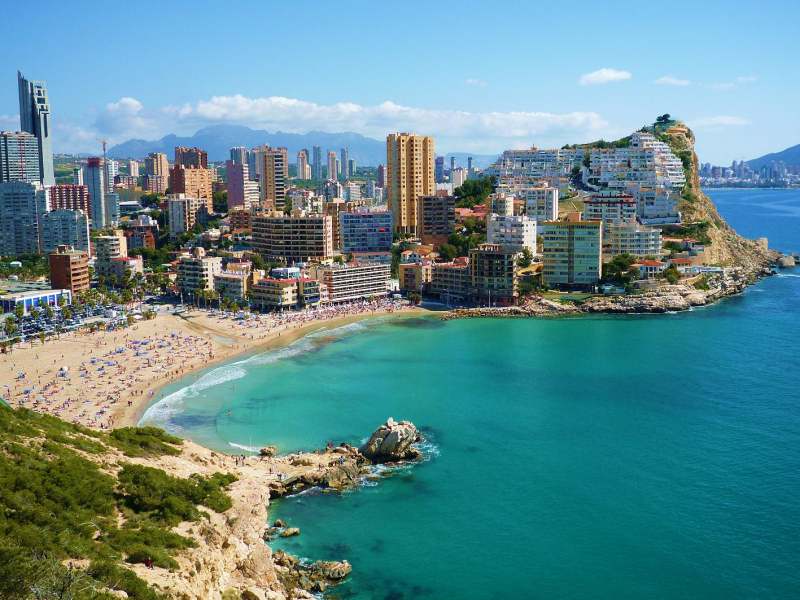
http://www.taylorwimpeyspain.com/ -
One of Spain's most well-known coastal regions, Costa del Azahar, is far to the north of Costa Blanca and even farther from Valencia. It's a very beautiful seaside area with lots of interesting cultural attractions. Cultural Castellon, a combination of the theater and museums in the city of Castellon and its lovely neighboring cities like Peniscola or Morella, is only one of the entertaining activities and outings available. The following are a few of the Costa del Azahar's most stunning Spanish coastal towns.
Peiscola, which is just north of Castellon, is home to a magnificent castle with a view of the seashore that once belonged to the Pope, also known as "Papa Luna." Torreblanca, which is located north of Castellon, is another place where you may unwind on the beaches.
The freshest fresh seafood, including prawns and lobsters, can be found in Vinaros when dining at a restaurant directly on the sand and pairing it with red wine. Going inland to Morella, a walled city encircled by olive and almond trees (See image) Jerica—to see the tower with Arab "Mudejar" architecture.
Location: Castellón
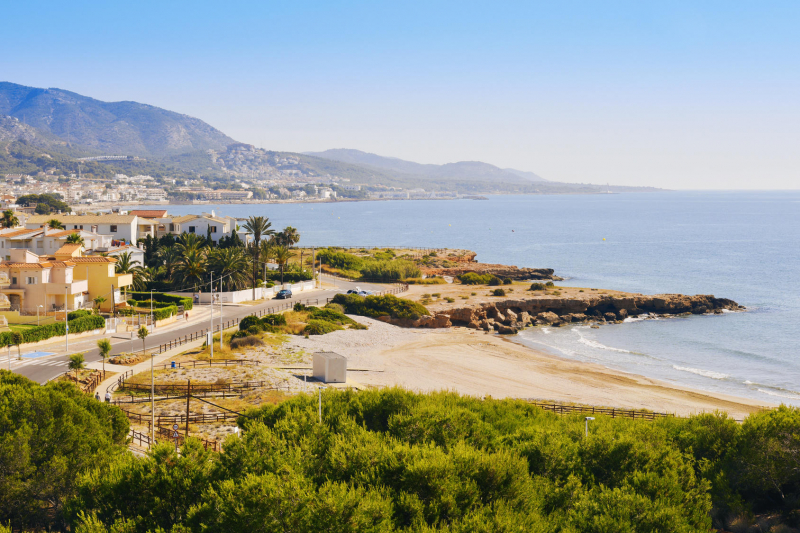
https://kadetade.com/ 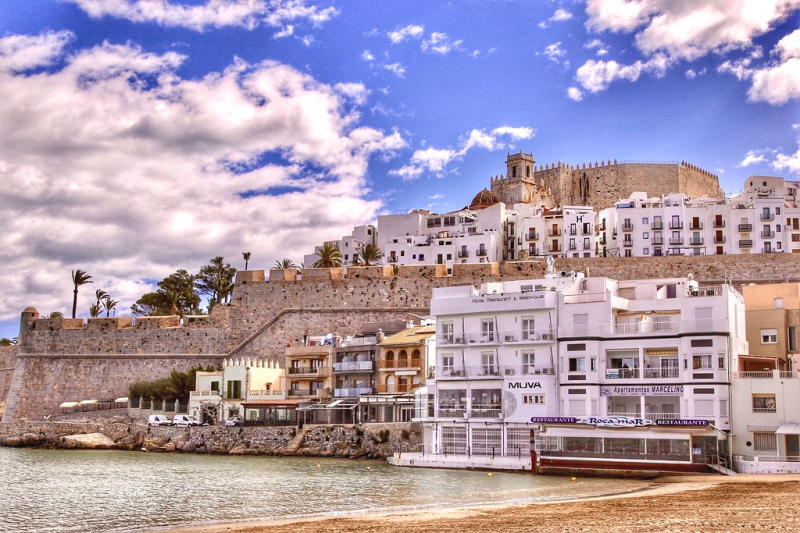
https://www.flickr.com -
Costa Cálida is one of the Spanish coastline's most well-liked stretches among locals. There are several types of beaches throughout its 250 kilometers of coastline, which is in the Murcia area. The name Costa Cálida refers to the region's hottest Mediterranean seas, which are on average 5 °C warmer than those along the other beaches.
The location of the Gulf of Mazarrón, a large gulf between Cabo de Palos (Murcia) and Cabo de Gata (Almera), is the cause of the greater temperature. It allows the frigid Atlantic Ocean currents to pass without influencing the water's temperature as they come in through the Strait of Gibraltar.
The Mazarrón Bay is a deeper arch that forms directly in the middle of this bay. And here, with its lovely beaches, is where Mazarrón is situated. El Mar Menor, the largest saltwater lagoon in Europe, is located further south and also in this warm region of the gulf. Known as La Manga del Mar Menor, this enormous lagoon is protected from the Mediterranean Sea by a 22 km long sandbar.
If you want to experience Spain's coastal vacations like a local, this is the ideal option. Although there aren't many beach resorts in this region of Spain, you may still discover some lovely apartments and beachfront villas for your summer holiday.Location: Murcia
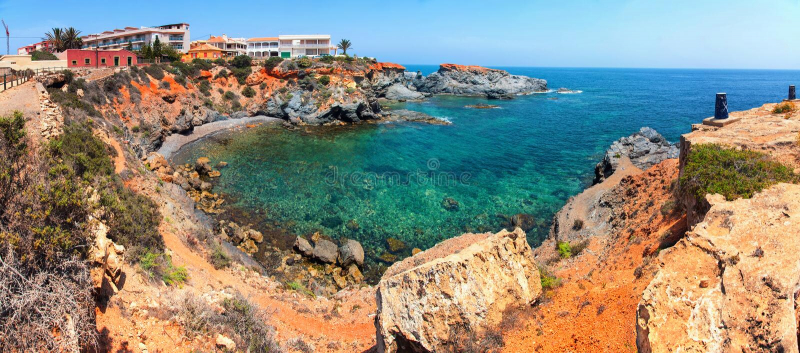
https://www.dreamstime.com/ 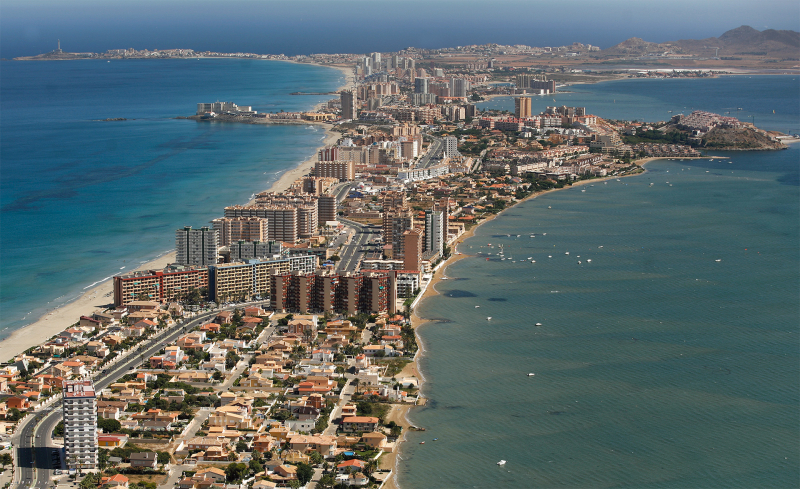
https://blog.sunmaster.co.uk/ -
The long sea arms that reach deep into the earth, known as the Galician estuaries, are said to bear the imprint of God's fingers who, after creating the world, rested his hand here. And perhaps that is true since the estuaries are a rare phenomena and a gift from heaven along the complicated 1,498 km of coastline that runs from Vigo to Ribadeo.
Each Galician estuary is a haven that holds a world of natural richness, scenes with a tale to tell. From east to west, from north to south, from the Ras Altas to the Ras Baixas, passing through those of the Costa rtabra and those of A Costa da Morte.
There are cliffs and beaches with calm waters, vineyards, pine forests, fishing villages, marinas, "pazos" with gardens by the water, and what many consider to be the best estuary in the world. There is also exquisite seafood cuisine.
Location: Rías Gallegas
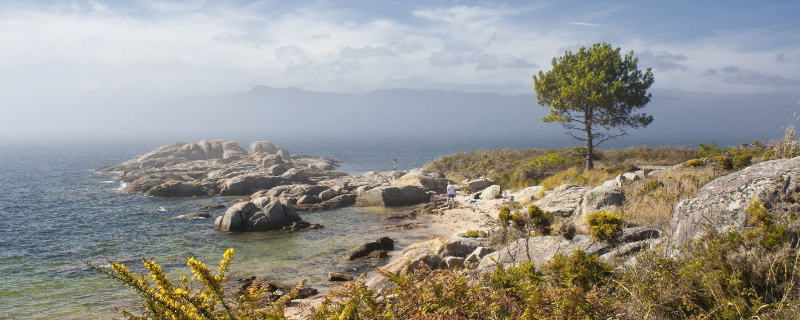
http://www.easyviajar.com 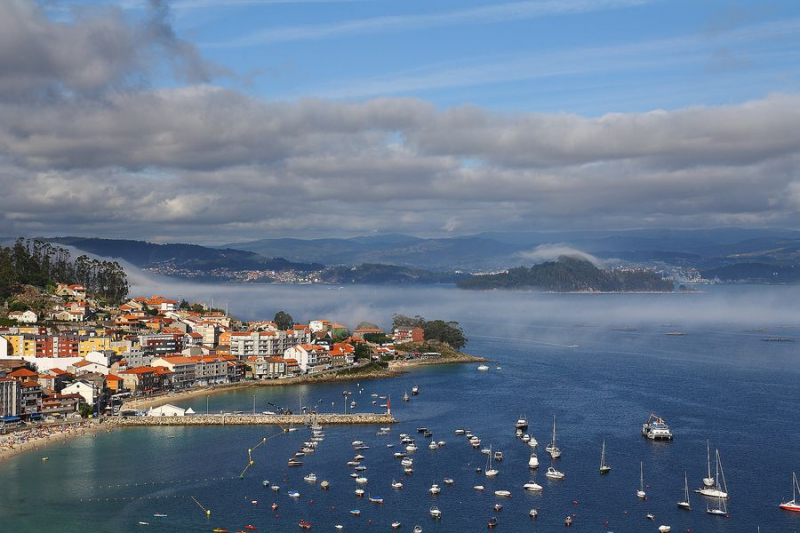
https://www.pinterest.com -
Let's check out another coastal village in Spain. Cantabria is an area that is predominately coastal, and the bulk of its residents reside near the sea. The fact that Santander is situated in a vast bay, the largest and safest natural harbor between Bordeaux and La Corua, is not surprising given this. Beautiful coastal communities like the historic and affluent Santillana de Mar, where the famed Altamira Cave is located, are also to be found.
Similar to Galicia, the Cantabrian coast features numerous estuaries, creating a tangled boundary where broad sandy beaches alternate with mountains and sheer cliffs.The Basque coast, which is found in the Autonomous Community of the Basque Country in northern Spain, is right adjacent to the Cantabrian beaches. This 176 km long stretch of coastline is found adjacent to the French border on the Cantabrian Sea coast.
Location: Northern coast of Spain
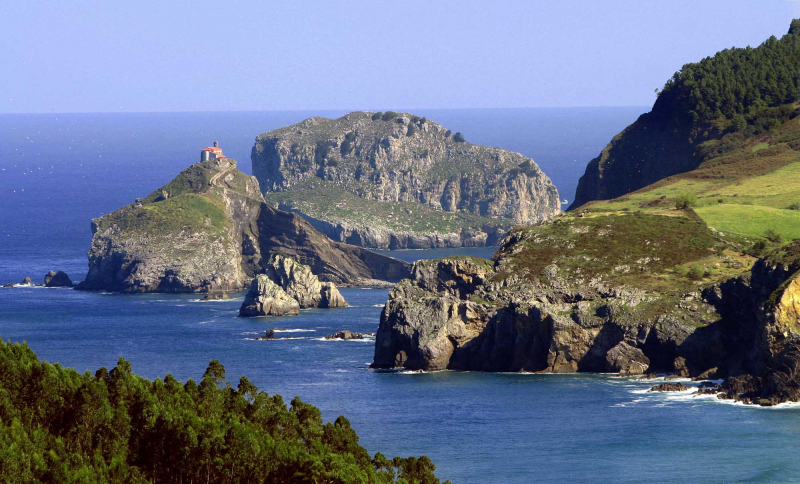
http://consejerosviajeros.com/ 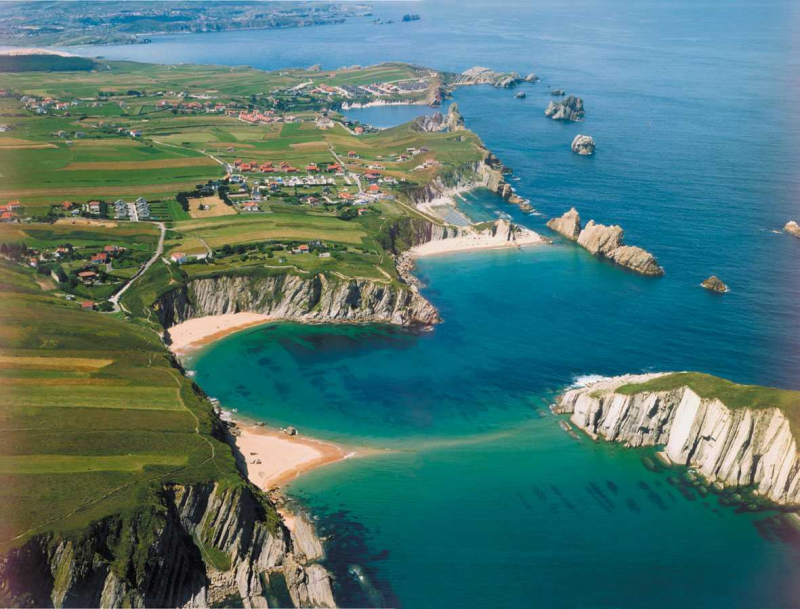
http://www.autocaravanas.es -
The main coastal regions of Spain's last but not least: Costa Verde! When we see the color of this coastline, where sand coves and towering cliffs follow one another and occasionally deep estuaries open where lovely fishing communities seek refuge, the name Costa Verde does not surprise us. The Cantabrian Sea's mild waters soak the coast's numerous beaches and sandy coves. Under the protection of the mountains, there are lush meadows and forests of pine and eucalyptus inside.
Two lovely fishing communities, Castropol and Figueras, greet us as we begin our journey in the extreme west, close to Galicia and moving east into Cantabria. They are among the nicest coastal towns in Spain, so be sure not to miss them!
They are a peaceful summer vacation location that provides all the conveniences and the opportunity to participate in water activities. They are located on the eastern bank of the Ra de Ribadeo, bordering Galicia. Other charming communities like Tapia de Casariego and Ortigueira, which are located in a rocky cove, lie to the east.
People reach the seaside village of Luarca in northern Spain by traveling further along the coastline. It is perched on a rocky outcrop at the base of a church and has a remote cemetery. This charming village has a lovely harbour with many of vibrant vessels. It's the ideal location for a summer vacation off the beaten path in coastal Spain and other Spanish seaside villages.Location: Bay of Biscay in the northern region of Asturias and Cantabria in Spain
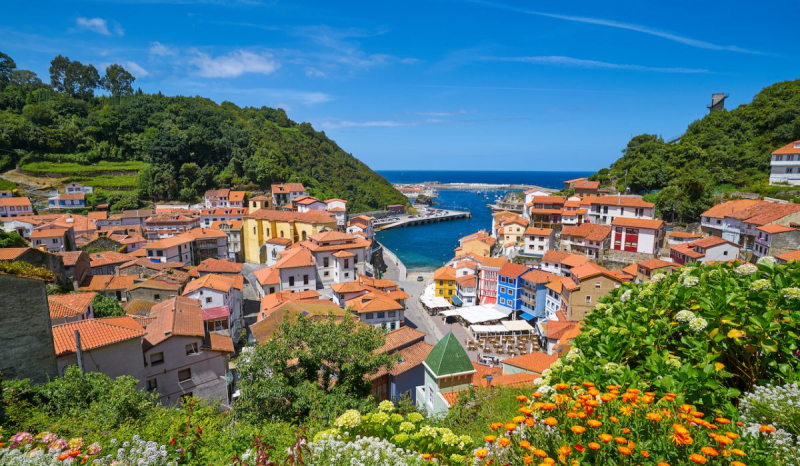
https://www.touristsecrets.com 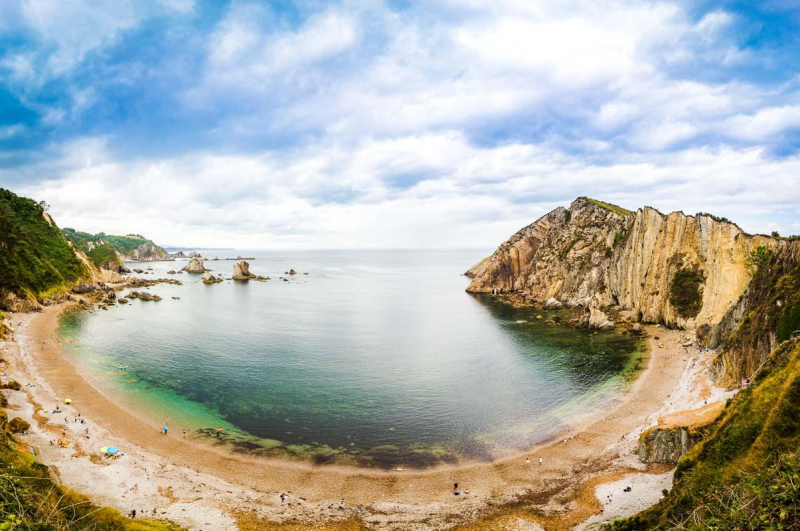
https://www.kevmrc.com/













